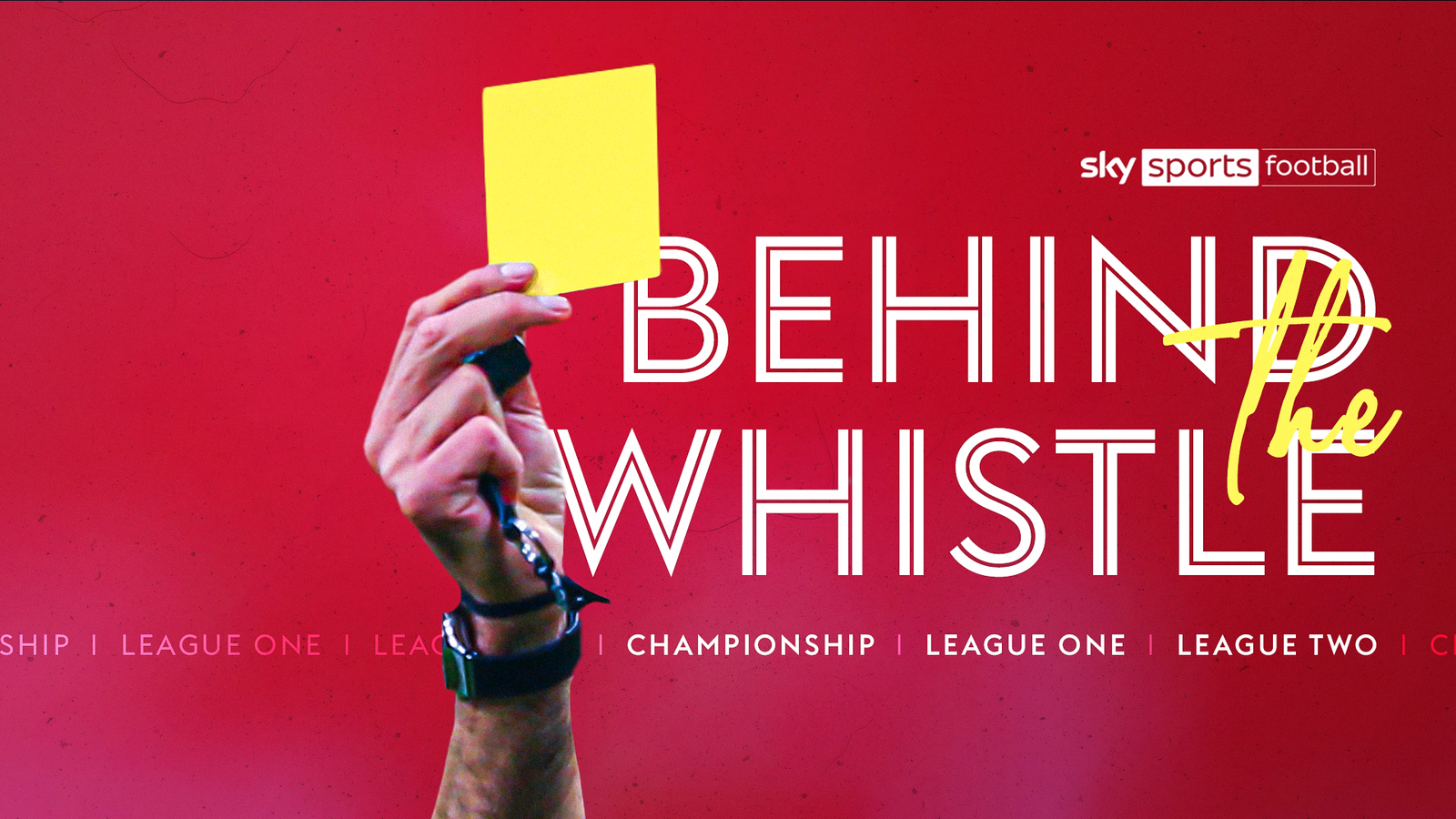Former Premier League referee Chris Foy examines decisions from the latest Sky Bet Championship, League One and League Two action
In Behind the Whistle, former Premier League referee Chris Foy goes through a selection of key match decisions from the latest Sky Bet Championship, League One and League Two action.
Behind the Whistle aims to give supporters of EFL clubs an insight into the decision-making considerations and also clarification of certain calls to provide an understanding of how the laws of the game are interpreted.
As part of a regular feature on Sky Sports following the conclusion of a matchday, Foy runs you through some refereeing matters in the EFL…
Huddersfield Town 1-1 Leeds United
Huddersfield Town’s Matty Pearson received a yellow card for this challenge during their Championship fixture against Leeds United
Incident: Possible red card (Huddersfield Town)
Decision: Yellow card (Huddersfield
Foy says: Following Leeds No 10 passing the ball towards a team-mate, Huddersfield Town No 4 makes a challenge with no attempt to play the ball. The challenge results in high and full contact, with the studs on the back of the calf of Leeds No 10.
The challenge has no prospect of playing the ball and results in a high point of contact with sufficient force to endanger the safety of the opponent and, in my view, he is very fortunate to escape a red card.
Although there isn’t a great deal of speed, the high point of contact and degree of force in the challenge, mean that it endangers the safety of the Leeds United player and a red card for serious foul play would be appropriate.
Plymouth Argyle 0-2 Ipswich Town
Ipswich Town scored this goal during their Championship fixture against Plymouth Argyle
Incident: Possible offside – interfering with play (Ipswich Town)
Decision: No offside – goal awarded (Ipswich Town)
Foy says: This is a passage of play which highlights the importance of effective teamwork and communication between the referee and assistant referee in making an on-field judgement.
When the ball is played into the penalty area, Ipswich Town’s No 10 is in an offside position and initially moves towards the likely dropping zone of the ball. However, it’s important to remember that being in an offside position does not automatically mean that the assistant referee should raise their flag to indicate an offside offence.
Whilst Ipswich Town No 10 makes a movement, he does not play the ball or impact the ability of any defender to challenge for or play the ball. Once he realises that the ball is beyond him, he steps aside before the ball is then headed back into his direction by a team-mate – which is when the next offside judgement is made.
Because the ball was touched or played by a team-mate, the offside judgement is ‘reset’, and at this point, Ipswich Town No 10 is no longer in an offside position and the correct decision is to keep the flag down and award the goal.
The referee and assistant referee communicate effectively to correctly judge that Ipswich Town No 10 was not interfering with an opponent because his positioning doesn’t impact the Plymouth Argyle No 5’s movement and ability to defend, therefore the goal is rightly awarded.
Portsmouth 2-1 Oxford United
Oxford United were awarded a penalty for this foul during their League One match against Portsmouth
Incident: Possible penalty – foul (Oxford United)
Decision: Penalty awarded (Oxford United)
Foy says: Although the decision to award a penalty would, at face value, appear relatively straightforward, this is because the referee is working hard to get into a very good position to make a judgement.
The ball is turned over quickly and immediately and the referee responds by accelerating towards play and then creates a very good viewing angle by moving to the right as the play enters the box.
Once the contact is made, he is in a great position to award the spot-kick, thanks to his work-rate.
In situations like this, when the ball is given away unexpectedly, it is easy for the referee to be flat-footed and be at risk of being caught out, however this is not the case here, due to the awareness and anticipation of the referee.
Swindon Town 1-1 Harrogate Town
Swindon Town were awarded a free-kick after this incident during their League Two fixture against Harrogate Town
Incident: Possible penalty (Swindon Town)
Decision: Free-kick awarded – contact outside the area (Swindon Town)
Foy says: This is a challenging call for the referee to make but, for me, he gets it spot on.
As unfair contact is made by the Harrogate Town defender, the Swindon Town player falls forwards and ends up with his entire body inside the penalty area.
The referee remains focused and correctly judges that the foul takes place outside the box, which is the correct decision.
The importance here is focusing on the feet and recognising exactly when the contact was made. It would be easy for the referee to misread this and point to the spot given how far the Swindon Town player ends up inside the penalty area when he falls to ground, but the correct decision is made.
Anthony Joshua’s heavyweight showdown with Francis Ngannou takes place on Friday March 8, live on Sky Sports Box Office with the main event expected around 11pm. Book Joshua v Ngannou now!
Get Sky Sports on WhatsApp!
You can now start receiving messages and alerts for the latest breaking sports news, analysis, in-depth features and videos from our dedicated WhatsApp channel!
Find out more here.
Source link
credite

